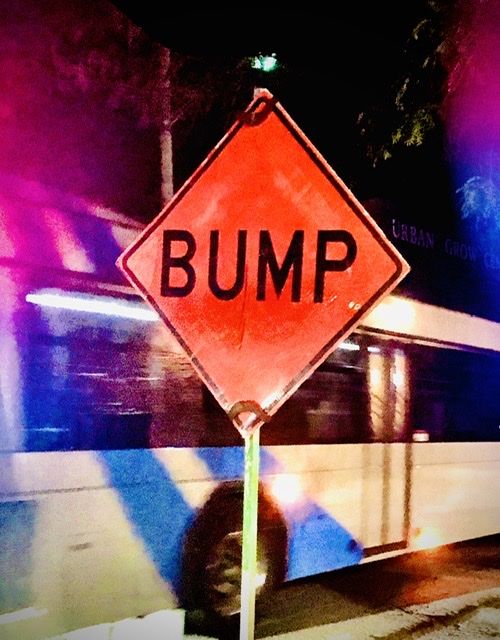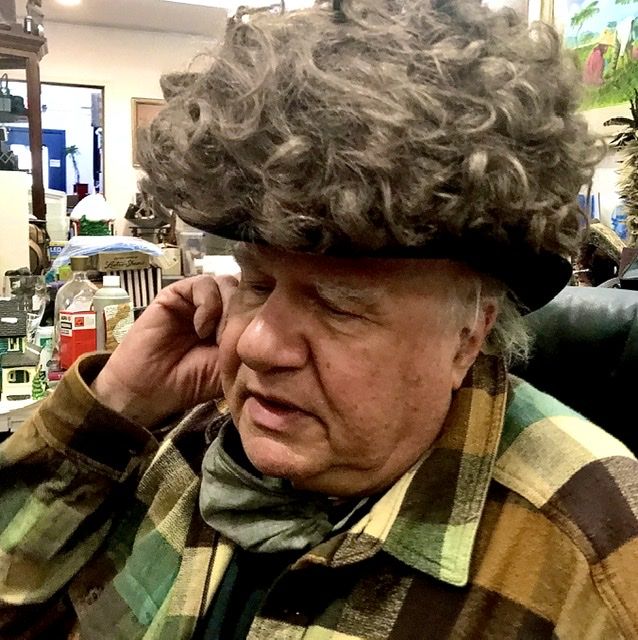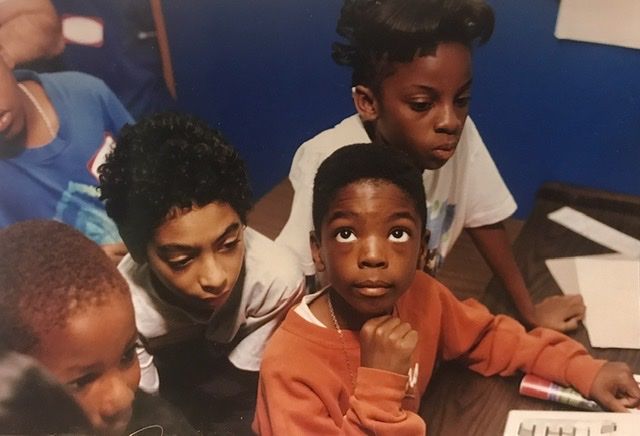How will my pic tell the story if I don't know the story?
Apr 2, 2022 13:11:26 #
Let me begin this way.
Soon after joining UHH, good encouragement and counsel was given me
here: https://www.uglyhedgehog.com/t-607417-1.html
and here: https://www.uglyhedgehog.com/t-606993-1.html
to keep reading,
working,
practicing with the only limited gear I have,
working,
and learning,
to improve in the efforts to make progress in photography....
....oh yeah....and work at it.
Right in that same period of time, in a brief, passing encounter with a photographer who has 45+ years of professional photography experience, I was counselled to keep working with the gear I have, (an older "outdated" entry level phone), rather than be discouraged I could not obtain anything else right then. There would be opportunity to grow in understanding of what camera may be a good choice for the type of pictures I wanted to make, and I may be surprised at seeing what the entry level phone camera capabilities are.
As things have worked out, all the above advice has been very good, and the available time to work at practicing a hobby of photography has been not much......the work - life imbalance through those past two and one half years has been basically work....and no life. Doesn't make good sense to be concerned about obtaining any other gear while there is not much opportunity to go out using it sufficiently, either.
There has been some reading here and elsewhere on photography matters, when the mental and physical weariness can be stuffed down enough to permit reading for a bit without just collapsing into exhausted sleep before back to work, but not nearly enough practice time.
It is mentioned in quite a few places that basically, good and great photographs are good and great because they tell a story.
I'm not doing photojournalism nor recording once-in-a-lifetime events and activities, nor catching on camera some momentous happening of any historical significance, so I don't know any way to make the pics I have "tell a story".
I don't know enough to make it possible to view a scene and see right away how I will compose it and what "story" it contains and how I will take a pic to tell that story. That leads me to thinking I should just consider them things that are only good for personal display, because they lack the necessary ingredient to suitably be considered for public display.
They certainly don't pass muster to be critiqued on any criteria of high resolution image quality, nor technical exactness, nor human interest events, nor special and advanced technique, they are not SOOC, they are not post processed in two minutes or less...but....
....sometimes there are some pics I would like to let others see anyway....storyless pics.
Not too long ago, in a thread addressing giving useful critique, Gene51 made a comment regarding thoughts for consideration:
1. what did you see that got your interest and why did you to want to take the picture?
2. what do you want the viewer of your picture to see in it?
Before having my thinking stirred by Gene's remarks, I would probably have answered "...why did you want to take the picture ..."
...like this: "Just because."
I would probably not have had an answer for the other question....maybe I still don't.
How is an inexperienced person to know what kind of pics are likely to convey anything of interest to another person who may view it, when there is no story being told in it?
How should / can a person with a "not a real camera" go about learning what it takes to develop the knack for making general pics that tell a story?
I am truly unsure how the things I do ought to be classified in a photographic category. They just seem like stuff....through a dustie pane.
Soon after joining UHH, good encouragement and counsel was given me
here: https://www.uglyhedgehog.com/t-607417-1.html
and here: https://www.uglyhedgehog.com/t-606993-1.html
to keep reading,
working,
practicing with the only limited gear I have,
working,
and learning,
to improve in the efforts to make progress in photography....
....oh yeah....and work at it.
Right in that same period of time, in a brief, passing encounter with a photographer who has 45+ years of professional photography experience, I was counselled to keep working with the gear I have, (an older "outdated" entry level phone), rather than be discouraged I could not obtain anything else right then. There would be opportunity to grow in understanding of what camera may be a good choice for the type of pictures I wanted to make, and I may be surprised at seeing what the entry level phone camera capabilities are.
As things have worked out, all the above advice has been very good, and the available time to work at practicing a hobby of photography has been not much......the work - life imbalance through those past two and one half years has been basically work....and no life. Doesn't make good sense to be concerned about obtaining any other gear while there is not much opportunity to go out using it sufficiently, either.
There has been some reading here and elsewhere on photography matters, when the mental and physical weariness can be stuffed down enough to permit reading for a bit without just collapsing into exhausted sleep before back to work, but not nearly enough practice time.
It is mentioned in quite a few places that basically, good and great photographs are good and great because they tell a story.
I'm not doing photojournalism nor recording once-in-a-lifetime events and activities, nor catching on camera some momentous happening of any historical significance, so I don't know any way to make the pics I have "tell a story".
I don't know enough to make it possible to view a scene and see right away how I will compose it and what "story" it contains and how I will take a pic to tell that story. That leads me to thinking I should just consider them things that are only good for personal display, because they lack the necessary ingredient to suitably be considered for public display.
They certainly don't pass muster to be critiqued on any criteria of high resolution image quality, nor technical exactness, nor human interest events, nor special and advanced technique, they are not SOOC, they are not post processed in two minutes or less...but....
....sometimes there are some pics I would like to let others see anyway....storyless pics.
Not too long ago, in a thread addressing giving useful critique, Gene51 made a comment regarding thoughts for consideration:
1. what did you see that got your interest and why did you to want to take the picture?
2. what do you want the viewer of your picture to see in it?
Before having my thinking stirred by Gene's remarks, I would probably have answered "...why did you want to take the picture ..."
...like this: "Just because."
I would probably not have had an answer for the other question....maybe I still don't.
How is an inexperienced person to know what kind of pics are likely to convey anything of interest to another person who may view it, when there is no story being told in it?
How should / can a person with a "not a real camera" go about learning what it takes to develop the knack for making general pics that tell a story?
I am truly unsure how the things I do ought to be classified in a photographic category. They just seem like stuff....through a dustie pane.
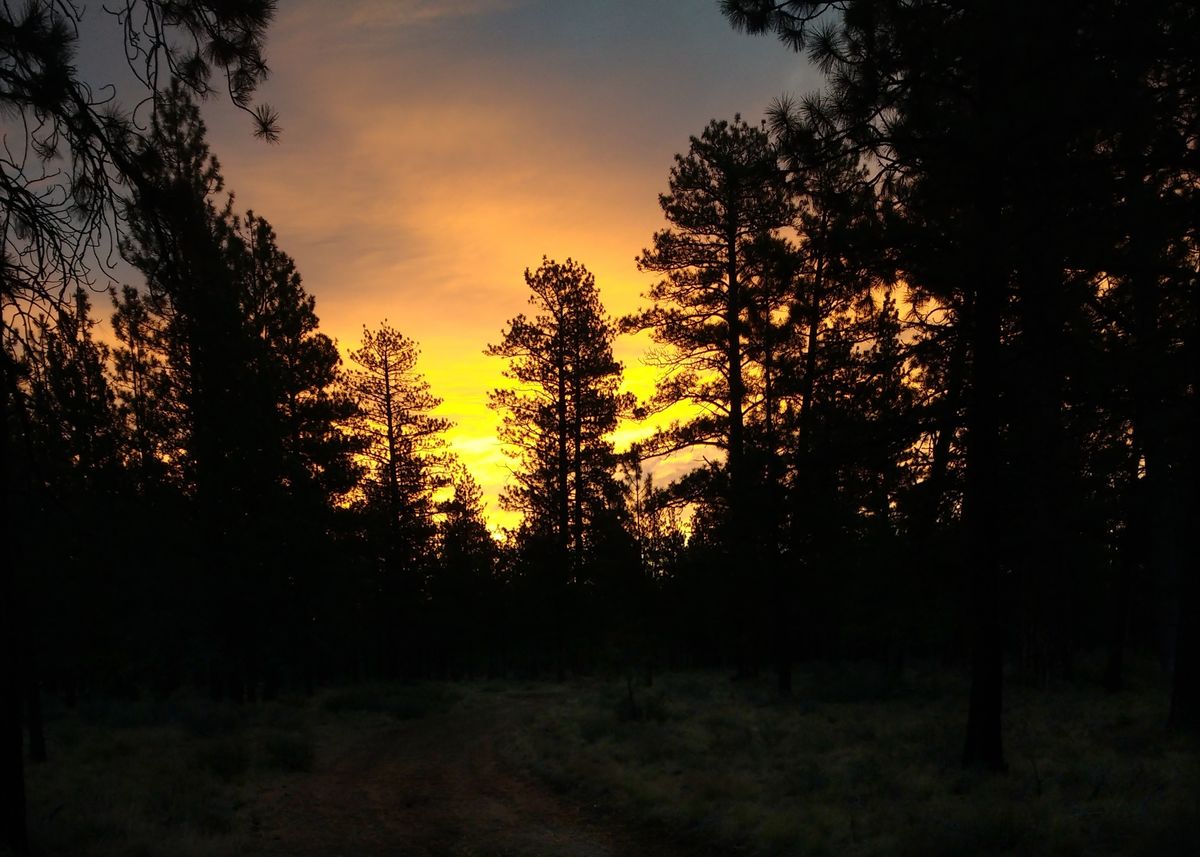
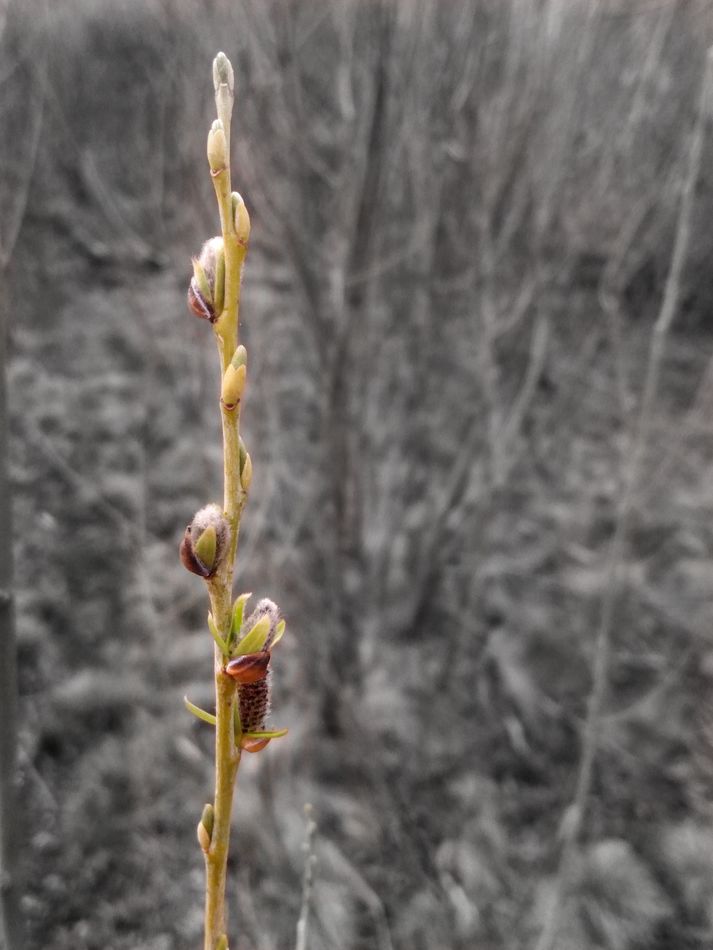
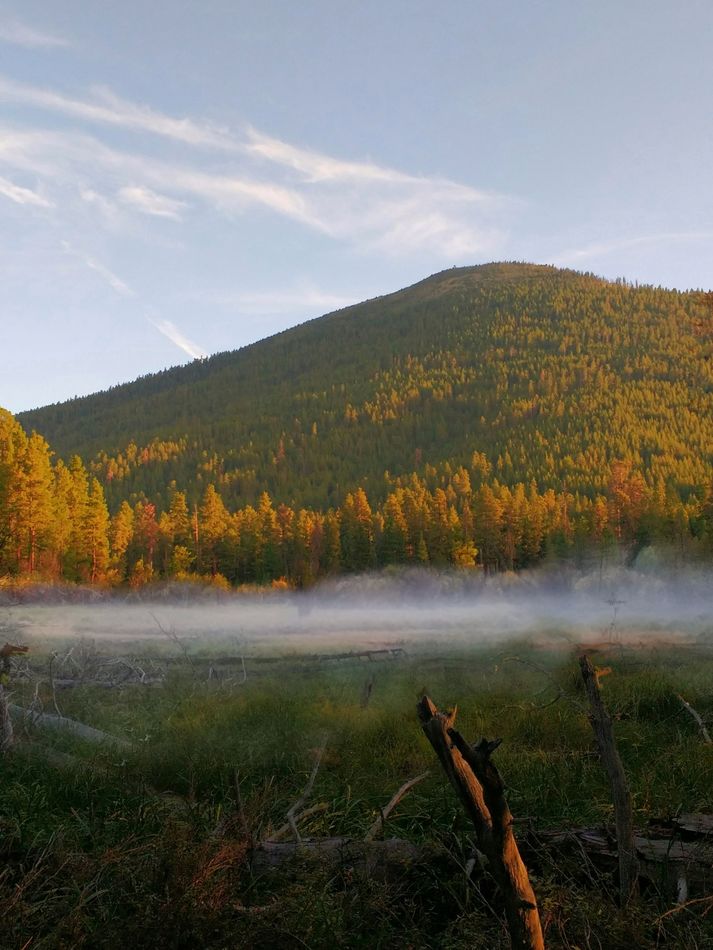
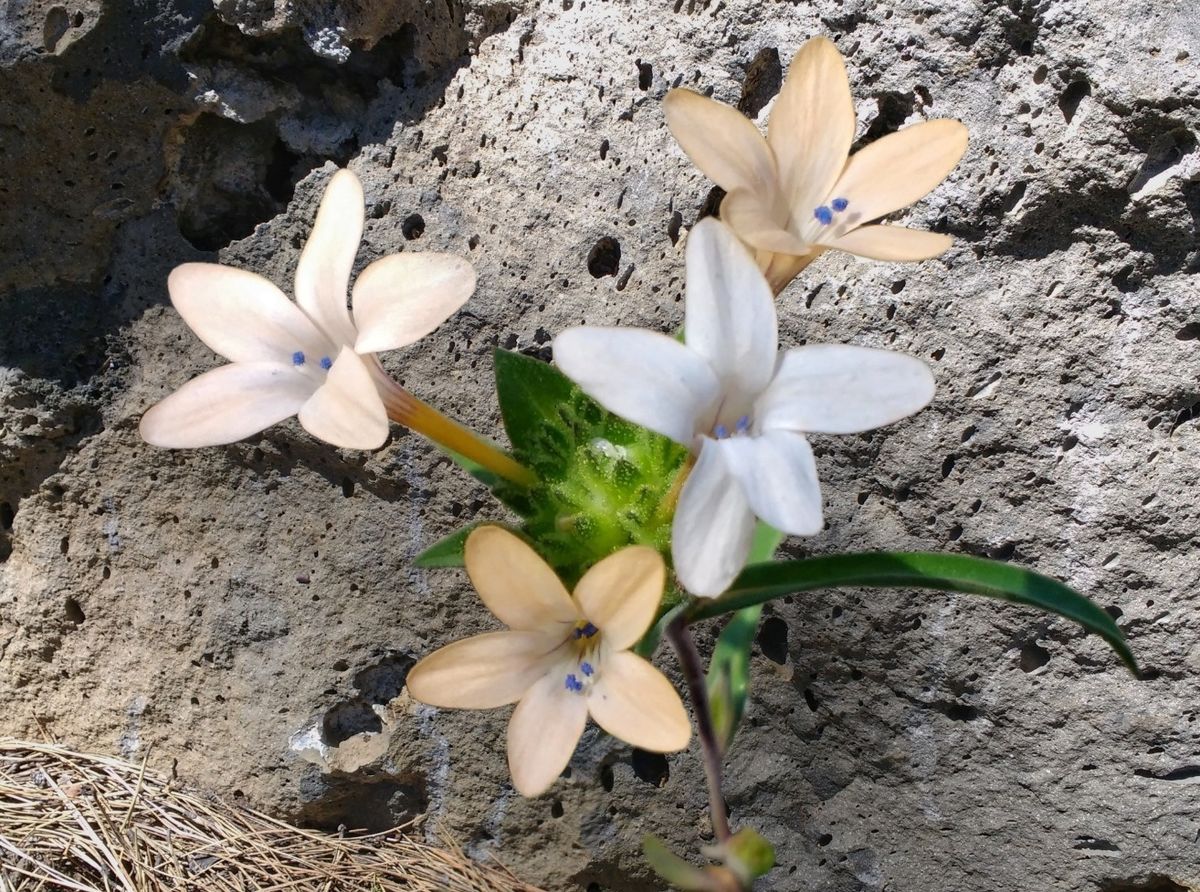
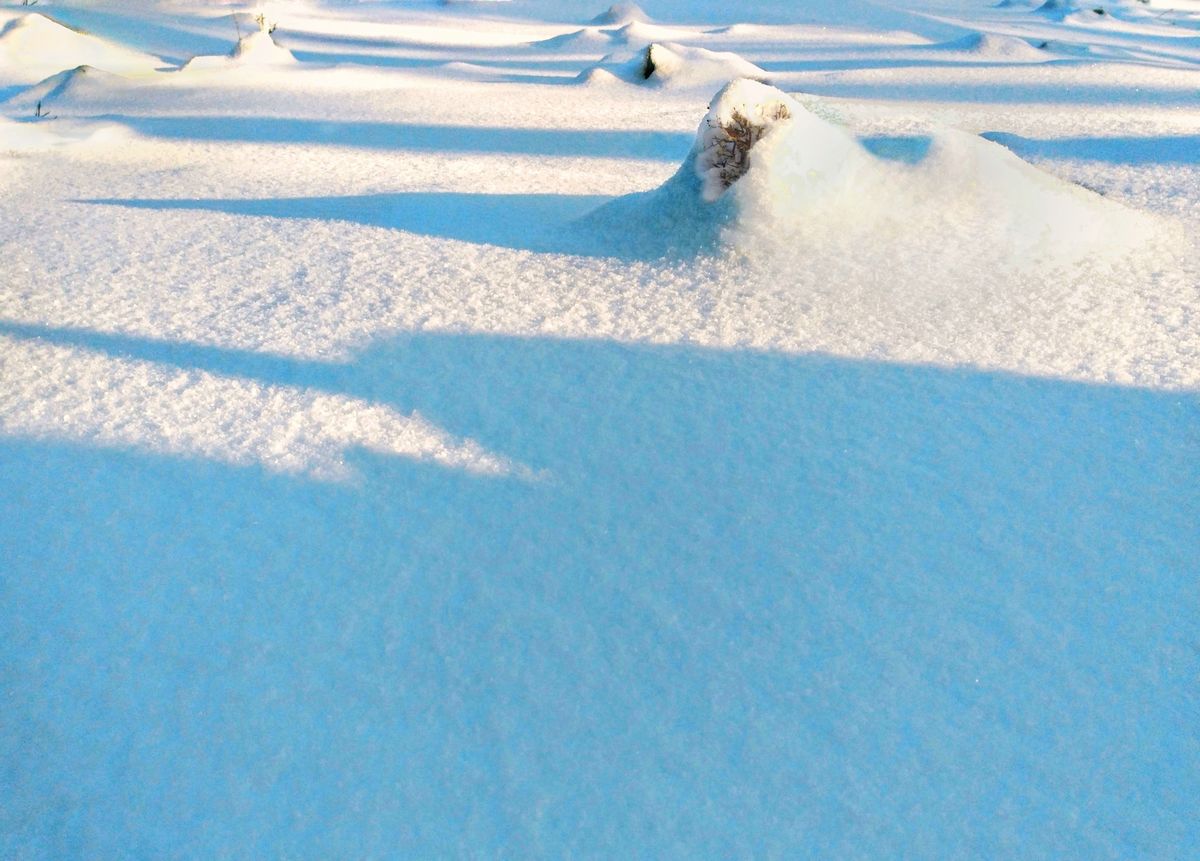
Apr 2, 2022 13:15:03 #
Theres absolutely no reason that a photo should hafta tell a story. Its one of many things that wannabees parrot to each other in order to appear wise.
Story telling is just one possible function of photography.
.
Story telling is just one possible function of photography.
.
Apr 2, 2022 13:16:14 #
For someone who “hasn’t a clue”, you’ve done a pretty d@mned good job!
Your “story” is The Beauty I Have Found Around Me.
Now, run with it and don’t look back!
Your “story” is The Beauty I Have Found Around Me.
Now, run with it and don’t look back!
Apr 2, 2022 13:23:18 #
NickGee
Loc: Pacific Northwest
You're overthinking this. Stop listening to advice and just do it. And look at great photographs ... that is, photos from great photographers. See what they see. Then free up your eye.
Apr 2, 2022 13:36:20 #
Najataagihe wrote:
For someone who “hasn’t a clue”, you’ve done a pretty d@mned good job!
Your “story” is The Beauty I Have Found Around Me.
Now, run with it and don’t look back!
Your “story” is The Beauty I Have Found Around Me.
Now, run with it and don’t look back!
I wholeheartedly agree!!! I like your pictures, especially the last two, and in particular, the snow scene. You obviously have an "eye" for photography. Keep them coming!!!
Loren - in Beautiful Baguio City
Apr 2, 2022 13:49:15 #
Amator21
Loc: California
I think there are several (many) reasons why people take pictures. One that I IMHO think is most important is that you are enjoyment doing it. Then you can branch in to one of the many possibilities available to you" Technical proficiency, Artistic display etc. etc, So my advice would be STOP trying measuring up to some ill defined "standard" but just take pictures. And again in MHO I like your pictures, keep doing it!
Poul
Poul
Apr 2, 2022 13:57:16 #
Mongo
Loc: Western New York
I will tell you a different story. I was a imaging scientist for the filmmaker in Rochester, NY, for 45 years, and since my youth I was taking photos. For example, in my high school yearbook I took about 50% 0f the candids. But I am far from great.
You have done this long enough with a cellphone camera, and I suggest that you examine your means and find a older digital SLR kit with a couple of lens. With that expanded equipment, you can better learn some of the technical methods which will help you improve your composition.
For example, depth of field. Or blur of subject or background. Modification of exposure. Perhaps some filters or macro lens (filter). Street night time shots. Nature shots needing control over focus, shutter or depth of field.
What I envision is $300 or less. I know because I have gifted similar kits to some people. For many, but not all, they experience a leap in their skills, with new tools, and many newer ways to see the world.
We only live a finite period of time. Photography has been fulfilling to you but it could be more so. Consider a hardware upgrade. Take your time looking, but it will be helpful if you can jump on the right deal. My bias is to a Nikon DX digital SLR. Make sure you have economical options for spare batteries. Recently I priced these for a friend considering selling his. When we found the price it would get on the market, he gifted it to an 11 year old relative.
You have done this long enough with a cellphone camera, and I suggest that you examine your means and find a older digital SLR kit with a couple of lens. With that expanded equipment, you can better learn some of the technical methods which will help you improve your composition.
For example, depth of field. Or blur of subject or background. Modification of exposure. Perhaps some filters or macro lens (filter). Street night time shots. Nature shots needing control over focus, shutter or depth of field.
What I envision is $300 or less. I know because I have gifted similar kits to some people. For many, but not all, they experience a leap in their skills, with new tools, and many newer ways to see the world.
We only live a finite period of time. Photography has been fulfilling to you but it could be more so. Consider a hardware upgrade. Take your time looking, but it will be helpful if you can jump on the right deal. My bias is to a Nikon DX digital SLR. Make sure you have economical options for spare batteries. Recently I priced these for a friend considering selling his. When we found the price it would get on the market, he gifted it to an 11 year old relative.
Apr 2, 2022 13:57:18 #
For whom are you taking the photograph?
My approach is to photograph things/scenes/people that interest me and adds to my pleasures or understandings. if somewhere along the way they pique the interests of other folks so much the better. It may tell a story for me but not for anyone else. But I have found, even among family and friends, that what I like may not be what they like. It is something I can't do anything about except to try to look at things the way I think they may, sometimes it works, more often it doesn't so I look for those things that capture my attention and go from there.
My approach is to photograph things/scenes/people that interest me and adds to my pleasures or understandings. if somewhere along the way they pique the interests of other folks so much the better. It may tell a story for me but not for anyone else. But I have found, even among family and friends, that what I like may not be what they like. It is something I can't do anything about except to try to look at things the way I think they may, sometimes it works, more often it doesn't so I look for those things that capture my attention and go from there.
Apr 2, 2022 13:58:47 #
I really like this series. As a looker of photos, I go by whether it is pleasing to my eye. I don’t spend time wondering what story it is telling, if any. My advice echoes the advice above; take what is pleasing to you and makes you happy.
Apr 2, 2022 14:06:46 #
EXACTLY!!! (response to the title)
None of mine "tell a story". The "story" is perceived/contrived by the viewer.....
See line three in my signature.
IF, perchance, I do imply a story, how do I know, without writing text, that the viewer will "read" the same story, and not create his own?
None of mine "tell a story". The "story" is perceived/contrived by the viewer.....
See line three in my signature.

IF, perchance, I do imply a story, how do I know, without writing text, that the viewer will "read" the same story, and not create his own?
Apr 2, 2022 14:36:02 #
Craig Meyer
Loc: Sparks, NV
I really like the photos you posted. I'm a strong adherent to the "Story" principle. BUTTTTTT, like Photography, "story" is an abstraction. When I look at a scene or subject, I'm unlikely to find a "Jack and Jill went up the hill" story. If I did I'd be all over it. As you and all the rest of us would. Good photo opportunities are far more subtle. I frequently find my stories resolve into questions. For example in the photo, above, of the kids sitting at the table, my question is "what's that girl looking the other way thinking?" What's everybody else looking at is good, but without the other girl, it is a pretty obvious, but good, scene/subject. With the odd (different) actor, the photo becomes more interesting to me. Measured by the much longer time I spent looking at the REST of the image---maybe to get a clue. Or, maybe it's just because I was usually the one looking at something else. But the implied line of sight of subjects looking, particularly out of the frame, is a fundamental element of compositions that photographers, and painters use and look for. Back to the mystery "story."
The point Gene (ALWAYS listen to Gene51) was making is great photos are more than pretty pictures. Pretty content needs to be portrayed with a point of view. For example, your stunning landscape with the colorful clouds is more interesting because of the angle you chose that obscures the pathway somewhat. To me that adds a little mystery and keeps my eye on and IN the frame looking for clues about what's down that path. That's all it takes to muster a "Story" element to a very attractive scene. The snow scene stands on its own because it is largely monochromatic, so it is different than a normal view and it says "It's COLD here!"
As far as equipment goes, anything that takes an image today is far more advanced that most of the equipment many of the "Masters" of early photography had. Think Mathew Brady on the Prairie, telling the stories of the Old West. He had a huge View Camera and glass plates for negatives, and he had to process them in the wild. It took an entire wagon to hold his stuff and make a Darkroom. He'd jump at an iphone 4 in a second. So, keep on keepin' on. But continue to ask "Why am I attracted enough to this scene/subject to stop and look?" And, "in what way can I capture this scene that will attract someone else (or get me to return) to look at a photograph of it?
C
The point Gene (ALWAYS listen to Gene51) was making is great photos are more than pretty pictures. Pretty content needs to be portrayed with a point of view. For example, your stunning landscape with the colorful clouds is more interesting because of the angle you chose that obscures the pathway somewhat. To me that adds a little mystery and keeps my eye on and IN the frame looking for clues about what's down that path. That's all it takes to muster a "Story" element to a very attractive scene. The snow scene stands on its own because it is largely monochromatic, so it is different than a normal view and it says "It's COLD here!"
As far as equipment goes, anything that takes an image today is far more advanced that most of the equipment many of the "Masters" of early photography had. Think Mathew Brady on the Prairie, telling the stories of the Old West. He had a huge View Camera and glass plates for negatives, and he had to process them in the wild. It took an entire wagon to hold his stuff and make a Darkroom. He'd jump at an iphone 4 in a second. So, keep on keepin' on. But continue to ask "Why am I attracted enough to this scene/subject to stop and look?" And, "in what way can I capture this scene that will attract someone else (or get me to return) to look at a photograph of it?
C
Apr 2, 2022 14:41:28 #
dustie wrote:
Let me begin this way. br Soon after joining UHH, ... (show quote)
Looks like you're off to a good start.
Photography is processed in a different part of the brain from speech, prose, and logic. It is a "visual language." The part of you that composes images and chooses moments to record does not necessarily have to consult the part of you that tells verbal stories. It cannot help but speak on its own. If you give it a vocabulary by looking at thousands of great photos from great photographers, viewing great art, watching great films, practicing your own craft, and so forth, you will be amazed at how quickly your work improves.
I once worked for an art school grad (and later married a dual art major/English major). We all worked together at one point, and had some discussions about this. At the time, we were producing multi-image slide shows for corporate meetings and workshops. That art was pure communications, combining prose (narration), images (art, graphics, photos) and music (adding tonal emphasis, controlling pace, setting moods).
Ralph had 24, 2-drawer file cabinets in his office, holding up a work table. They were largely filled with "tear sheets" from magazines and newspapers and ads. That was his library of design ideas. He knew what worked and combined successful ideas in new ways. I had several shelves of photography books in my office, along with dozens of photography magazines. Lynda had her art books. We were continually sharing ideas and examples in response to requests to illustrate something for someone.
One of Ralph's favorite statements about design was, "There are general guidelines, accepted practices, clichés, and things they teach in art school. Then there is what you DO with those things, to those things, and in spite of those things. The only RULE is to make something you, and hopefully others, like enough to respond to in some manner.
My own mantra has been to, "Turn worthy concepts into streams of words and images that evoke desirable actions." It worked for me. It gave me purpose, if not method.
Apr 2, 2022 15:36:12 #
Telling the story.
If you want to tell stories with your images there are a number of tools you have to help you tell the story you want to tell or carate the interpretation of any person, place, thing, mood, humans condition or whatever you want to visually communicate.
The approach I going to recommend is very simple and does not include too much philosophy, psychology or whatever influences of other photographers, great or otherwise. This involves a few simple "rules" if you will as starting pong and the rest is up to your creativity, imagination and technical talents and skills.
The tools are light, shadow focus, composition, colour and simplicity or not.
The basic "COMMAMDAMNT" is that every image makes a STATEMENT. That statement is the motif of your story. It can be simple, complex, or chaotic- that depends on the story and your interpretation.
Here is an example to think about. Let's suppose to want to make a PORTRAIT of a beautiful lady. We proceed to make ahead and should image of the subject, dressed in a dark muted coloured blouse and a fairly dark background and the lighting is set to emphasize her facial features, which are in highlight with enough shadow to make a dramatic low--key portrait. The STSTEMET- "A beautiful lady". Now, imagine the same setup except the lady is wearing a BRIGHT RED blouse. The colour has changed the statement to "A pretty lady in a bright red dress". Then, image the same lady in an extremely colourful or perhaps rather ostentatious dress and we pull back the camera to make it a full-length pose. So, visually, the STATEMENT CHANGES to "A brightly coloured fashionable dress with a pretty model" in it"! The same lady in chef's attire surrounded by pots, pans and kitchen appliances and again the statement chance to " a pretty cook"!
This scenario may seem too simplistic but it is a case where the STATEMENT was changed by variations in colour and compassion. It is the BASIC difference between a classical portrait and a fashion photograph. But please remember YOU are the storyteller so perhaps you want to interpret the lady's character as a very up-to-date- fashion-conscious person and characterize her as such. Or, suppose you are shooting for an advertising shot of a new-fangled digital robotic kinda dishwasher so you photograph the same lady in a high-fashion evening dress in the mild of a chaotic and messy kitchen scene- perhaps that will SAY "You can wash yo dishes in you designer clothing with no fuss and muss"! TELL THE STORY YOUR WAY- straightforward, differet, funny, dramatically or whatever you want to express.
FOCUS: Many folks on this forum are always discussing "BOKEH" which is a background treatment or effect that is a function of selective focus. The talk about high-speed lenses, limited DOP, and various aperture blade configurations that yield better bokeh. The main reason for use of selective focus is to help in the storytelling aspect of photography. Whether you are shooting a flower, an insect, a bird, people, a detail of a scene or whatever, you need to decide if the background, foreground or any of the surroundings add to detract from the story. You may need MORE depth of field to include sharper background and foreground detail to tell the story- that's why many photographers use wide lenses, smaller apertures, focus-stacking, and tilting lenses to increase sharpness over a greater distance.
COMPOSITION: Agan, everyone talks about the rules of thrids and theories such as dynamic symmetry, etc. In the final analysis, all of them are to direct the viewer's eye to the motif ofhthe image.
DIMENTIONALLITY: Light and shadow are used to create the illusion of the third dimension on a two-dimension screen or sheet of paper. That helps with storytelling because it provides the viewer with a sense of realism and the feeling that the viewer can, visually, walk into the image. Ligh and shadow are also used to emphasize or de-emphasize any aspect of the subject.
I can go on and on but the point is that you must utilize your photographic skills to create succinct statements which form the story. Decide on the story you want to tell and assemble the tools that are required for the job. When I mention "tools", that does not mean you need to go out and buy new gear for each story. It means you have to form an approach, using want you have at your disposal, and set out to do the work.
My personal approach is to keep it simple. "Short stories" are easier to visually consume. "Longe stories" require more than one image so you will have to construct a multiple picture story!
If you want to tell stories with your images there are a number of tools you have to help you tell the story you want to tell or carate the interpretation of any person, place, thing, mood, humans condition or whatever you want to visually communicate.
The approach I going to recommend is very simple and does not include too much philosophy, psychology or whatever influences of other photographers, great or otherwise. This involves a few simple "rules" if you will as starting pong and the rest is up to your creativity, imagination and technical talents and skills.
The tools are light, shadow focus, composition, colour and simplicity or not.
The basic "COMMAMDAMNT" is that every image makes a STATEMENT. That statement is the motif of your story. It can be simple, complex, or chaotic- that depends on the story and your interpretation.
Here is an example to think about. Let's suppose to want to make a PORTRAIT of a beautiful lady. We proceed to make ahead and should image of the subject, dressed in a dark muted coloured blouse and a fairly dark background and the lighting is set to emphasize her facial features, which are in highlight with enough shadow to make a dramatic low--key portrait. The STSTEMET- "A beautiful lady". Now, imagine the same setup except the lady is wearing a BRIGHT RED blouse. The colour has changed the statement to "A pretty lady in a bright red dress". Then, image the same lady in an extremely colourful or perhaps rather ostentatious dress and we pull back the camera to make it a full-length pose. So, visually, the STATEMENT CHANGES to "A brightly coloured fashionable dress with a pretty model" in it"! The same lady in chef's attire surrounded by pots, pans and kitchen appliances and again the statement chance to " a pretty cook"!
This scenario may seem too simplistic but it is a case where the STATEMENT was changed by variations in colour and compassion. It is the BASIC difference between a classical portrait and a fashion photograph. But please remember YOU are the storyteller so perhaps you want to interpret the lady's character as a very up-to-date- fashion-conscious person and characterize her as such. Or, suppose you are shooting for an advertising shot of a new-fangled digital robotic kinda dishwasher so you photograph the same lady in a high-fashion evening dress in the mild of a chaotic and messy kitchen scene- perhaps that will SAY "You can wash yo dishes in you designer clothing with no fuss and muss"! TELL THE STORY YOUR WAY- straightforward, differet, funny, dramatically or whatever you want to express.
FOCUS: Many folks on this forum are always discussing "BOKEH" which is a background treatment or effect that is a function of selective focus. The talk about high-speed lenses, limited DOP, and various aperture blade configurations that yield better bokeh. The main reason for use of selective focus is to help in the storytelling aspect of photography. Whether you are shooting a flower, an insect, a bird, people, a detail of a scene or whatever, you need to decide if the background, foreground or any of the surroundings add to detract from the story. You may need MORE depth of field to include sharper background and foreground detail to tell the story- that's why many photographers use wide lenses, smaller apertures, focus-stacking, and tilting lenses to increase sharpness over a greater distance.
COMPOSITION: Agan, everyone talks about the rules of thrids and theories such as dynamic symmetry, etc. In the final analysis, all of them are to direct the viewer's eye to the motif ofhthe image.
DIMENTIONALLITY: Light and shadow are used to create the illusion of the third dimension on a two-dimension screen or sheet of paper. That helps with storytelling because it provides the viewer with a sense of realism and the feeling that the viewer can, visually, walk into the image. Ligh and shadow are also used to emphasize or de-emphasize any aspect of the subject.
I can go on and on but the point is that you must utilize your photographic skills to create succinct statements which form the story. Decide on the story you want to tell and assemble the tools that are required for the job. When I mention "tools", that does not mean you need to go out and buy new gear for each story. It means you have to form an approach, using want you have at your disposal, and set out to do the work.
My personal approach is to keep it simple. "Short stories" are easier to visually consume. "Longe stories" require more than one image so you will have to construct a multiple picture story!
Apr 2, 2022 20:38:17 #
User ID wrote:
Theres absolutely no reason that a photo should hafta tell a story. Its one of many things that wannabees parrot to each other in order to appear wise.
Story telling is just one possible function of photography.
.
Story telling is just one possible function of photography.
.
Thanks for some helpful insight, and a shot of that hat perm.

Apr 2, 2022 20:39:25 #
Najataagihe wrote:
For someone who “hasn’t a clue”, you’ve done a pretty d@mned good job!
Your “story” is The Beauty I Have Found Around Me.
Now, run with it and don’t look back!
Your “story” is The Beauty I Have Found Around Me.
Now, run with it and don’t look back!
Thanks for the uplift and story line.
If you want to reply, then register here. Registration is free and your account is created instantly, so you can post right away.

